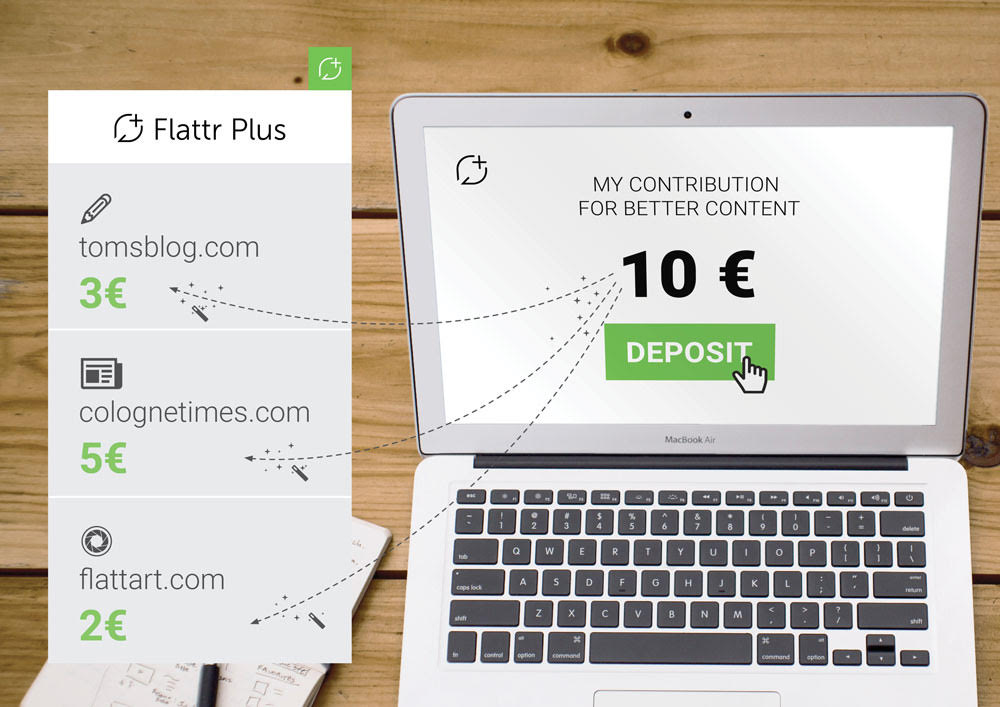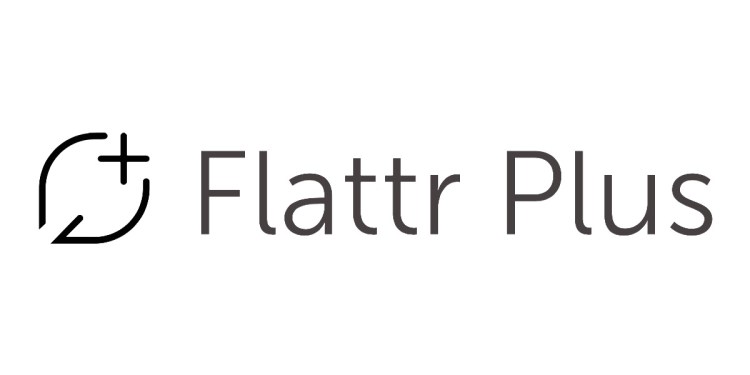Adblock Plus and Flattr today announced Flattr Plus, a way for users to automatically contribute real money in exchange for what they read, listen to, and watch on the Web. You can sign up for the latest attempt to monetize online content now, but the beta will only start rolling out “early this summer,” with a first stable release slated for the end of this year.
Adblock Plus is an ad blocking tool that debuted in 2006, and which has since seen 500 million downloads. Flattr, started in March 2010 by Peter Sunde and Linus Olsson, is a content-funding tool that lets people donate real money to show their appreciation for what they consume online. In December 2010, Flattr gained attention as a method of sending money to WikiLeaks, which had been cut off by PayPal, MasterCard, and Visa.
https://www.youtube.com/watch?v=kfO4PCfl6mE
So what exactly does Flattr Plus offer that is different from Flattr and other micropayment donation schemes? Instead of manually funding individual pieces of content (Flattr requires manually hitting a button to contribute money for an article, podcast, song, video, game, and so on), you simply set a monthly budget for all the content you consume. Flattr Plus then uses an algorithm to automatically apportion your budget based on which websites you engaged with the most during that month (you can override this if you want to decrease or increase your budget, give a specific site a larger percentage, and so on).
The beta will thus be focused on figuring out how to best measure “engagement” (time spent on the page? how far the user scrolls? whether text is highlighted?). This will be the key to determining whether Adblock Plus and Flattr have really “solved the challenges of frictionless payments,” as they claim.

“The idea of great content has gotten lost in clickbait headlines and slideshow articles,” Olsson said in a statement. “All with the goal of generating advertising revenues. If we want to reverse that trend, we need a funding model that is based on engagement and attention rather than mere visits. I am convinced that people’s growing willingness to support great content is the next big change for the Web. And it will happen if we provide them with a simple, easy-to-use solution that allows them to fund the art, music, and journalism they love. So that’s what we are building.”
In short, the idea is to give creators a new way to monetize their content, in addition to the existing methods (ads, paywalls, and individual payments). All you have to do is sign up. Once the beta has gained some traction, Adblock Plus and Flattr plan to reach out to creators. The duo will let them know not how many Flattr Plus users have been consuming their content, but how much money they could have claimed.
Publishers unfortunately won’t get paid for past contributions. If a publisher doesn’t sign up, the money doesn’t leave the user’s pocket.
Flattr currently makes money by charging a 10 percent transaction fee. Flattr Plus will take the same cut, though Adblock Plus head of operations Ben Williams told VentureBeat that both companies “are potentially open to decreasing” the percentage. Publishers aren’t charged anything to participate, meaning users are the ones paying the fee, and that will remain unchanged with Flattr Plus.

It follows that the next most obvious question is about fraud. What happens if I want to claim the money for a site I don’t own? Flattr has multiple verification systems to combat this — after all, the company has been running its content-funding tool for six years. But if Flattr Plus is as successful as the two companies hope, Flattr’s fraud detection will be really put to the test.
Flattr Plus is very much an evolutionary product — it will work with all publishers and content creators who already have Flattr. In fact, Flattr will eventually become Flattr Plus. That means if you run a website, you can register with Flattr today and begin receiving payments through Flattr Plus once it is released.
Adblock Plus
This isn’t a partnership that happened overnight — Adblock Plus reached out to Flattr back in 2013, and the two have been working on making funding easier for the last three years (Adblock Plus made a small investment in Flattr, but the two are still separate companies). Since Flattr had already figured out how to give content creators money, the goal was to scale up by making the process automatic and simple.
So if Flattr Plus is merely the next logical step for Flattr, where does Adblock Plus come in, aside from kindly lending the word “Plus” to its name? Flattr Plus will “eventually” be integrated into Adblock Plus, Williams told VentureBeat.
Once Flattr Plus goes through its beta process and the model is proven, the functionality will be incorporated into Adblock Plus and made available to millions of people. How exactly Adblock Plus will inform its users about the new option (“maybe a notification” Williams speculated) is still up in the air.
Flattr has signed up 30,000 creators and users since 2010, though the company doesn’t break out how many of each group it has. Flattr also doesn’t offer an average monthly amount that its users spend. Nonetheless, the duo has set out to give $500 million to publishers by the end of 2017 (aiming for roughly 10 million users willing to pay).
That’s a very high bar to set.
Still, this isn’t the first time Eyeo, the Germany-based company behind the Adblock Plus software, has tried to find a compromise between users and advertisers. Its Acceptable Ads initiative selectively blocks advertising and allows nonintrusive ads through. The company doesn’t share what percentage of users keep it on, though Williams did say the “opt out rate is in the low single digits.” And while Acceptable Ads have been available for a while, “there’s gotta be more than that,” Williams added.
“The current model of showing obnoxious ads to users and violating their privacy in return for content has failed: users are increasingly frustrated with the advertising experience on the Web and at the same time aggressive ads provide less and less value to publishers,” Eyeo cofounder Till Faida said in a statement. “With our Acceptable Ads initiative we have already proven that fewer and better ads provide more value; with Flattr Plus we’ll go one step further, providing even more choice to users in how they compensate publishers for the content they consume.”
Adblock Plus has an estimated 50 million users across desktop (Firefox, Chrome, Opera, Safari, IE) and mobile (Android and iOS). Along with other ad blockers, it has been an increasing pain for the online advertising industry.
But when it comes to the integration of Flattr Plus into Adblock Plus, the advertising industry would be simply skipped over. In theory, content creators would suddenly have access to a new revenue stream.
That, of course, wouldn’t happen overnight, and there’s no telling how many Adblock Plus users would actually bother participating. Even if the dispersal is automatic, you still have to set a monthly budget and hand over actual money.
Still, as someone who creates content and hates most online ads, I’m thankful Adblock Plus and Flattr are giving this a shot.
VentureBeat's mission is to be a digital town square for technical decision-makers to gain knowledge about transformative enterprise technology and transact. Learn More

